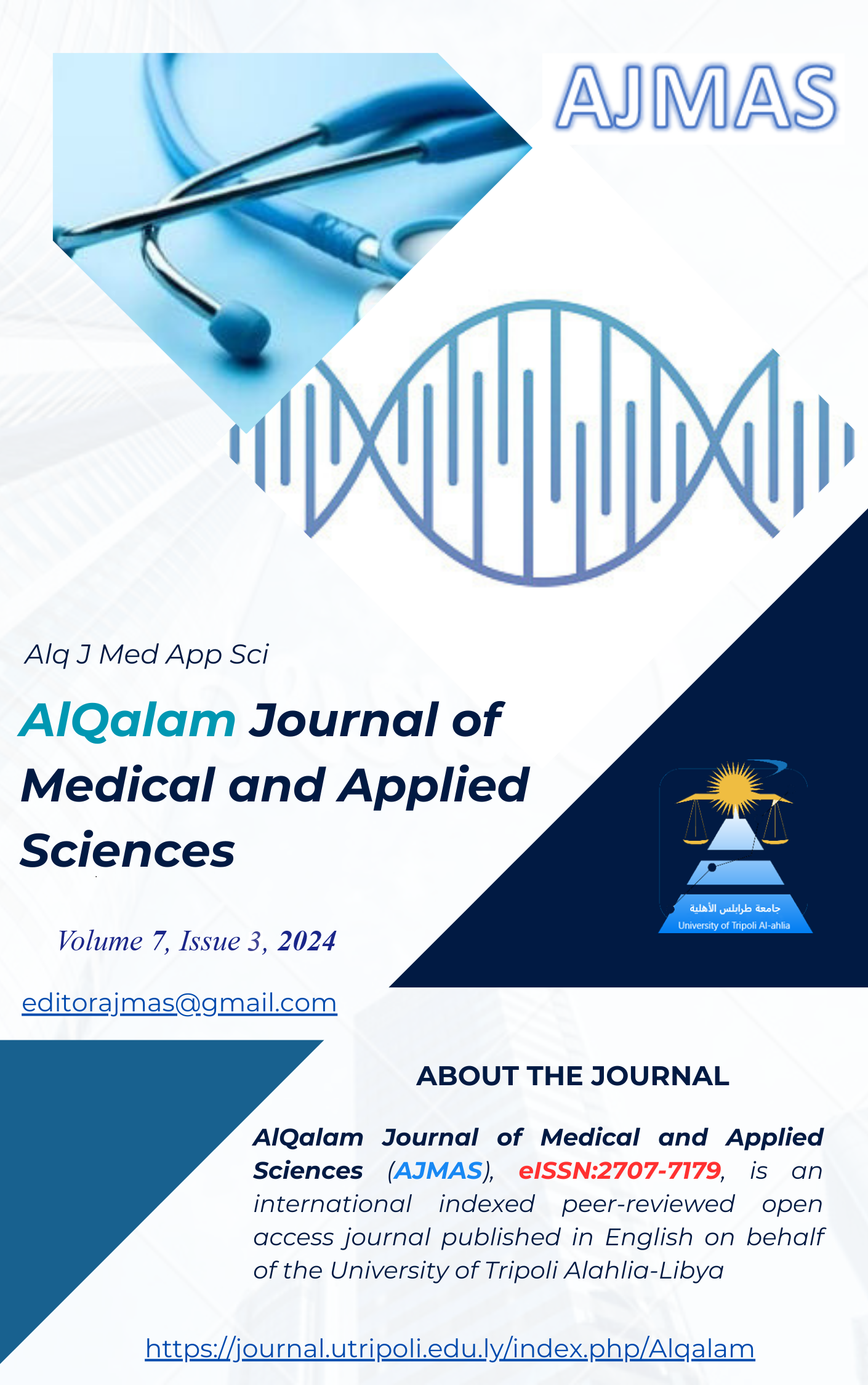Components of Dental Resin Composites: A Literature Review
DOI:
https://doi.org/10.54361/ajmas.247301Abstract
During the mid-1900s, dental resin composites (DRCs) were created in order to overcome the limitations of amalgam restorative material. This study aimed to review the primary constituents of DRCs using published scientific studies. The focus was on prominent dental journals, utilizing computer-based online searches to uncover their composition. The search was conducted for period from January 2000 to August 2023, using four search engines: PubMed, Science Direct, Scopus, and Google Scholar. The study also manually searched citations from relevant articles and examined the references of selected articles. The DRCs consist of organic phase such as Bis-GMA, UDMA, and TEGDMA; inorganic particles such as zirconium, silica, quartz, and barium are frequently utilized. Coupling agent such as 3-MPS are used in order to strengthen the adhesion between the filler and the resin matrix; photo-initiator and an accelerator of curing, with camphor quinone being the commonly employed photo-initiator. The accelerators in the DRCs are either diethyl-amino-ethyl-methacrylate (amine) or diketone; Inhibitor such as BHT is utilized to hinder untimely polymerization when the DRCs is subjected to ambient light in the dental practice, and pigments are introduced into DRCs to produce restorative materials with clinically acceptable colors. The mechanical and physical properties of DRCs are significantly impacted by their composition. This variability directly affects the quality and clinical success of the treatment, making it crucial for manufacturers to provide clear and accessible information for proper clinical application of the material.
خلال منتصف القرن العشرين، تم إنشاء مركبات راتينج الأسنان (DRCs) من أجل التغلب على القيود المفروضة على المواد الترميمية الأملغمية. تهدف هذه الدراسة إلى مراجعة المكونات الأساسية لDRCs باستخدام الدراسات العلمية المنشورة. كان التركيز على مجلات طب الأسنان البارزة، وذلك باستخدام عمليات البحث عبر الإنترنت المعتمدة على الكمبيوتر للكشف عن تركيبتها. تم إجراء البحث للفترة من يناير 2000 إلى أغسطس 2023، باستخدام أربعة محركات بحث: PubMed، وScience Direct، وScopus، وGoogle Scholar. كما بحثت الدراسة يدويًا في الاستشهادات من المقالات ذات الصلة وفحصت مراجع المقالات المختارة. يتكون الDRCs من المرحلة العضوية مثل Bis-GMA، وUDMA، وTEGDMA؛ وكثيرا ما تستخدم الجسيمات غير العضوية مثل الزركونيوم، والسيليكا، والكوارتز، والباريوم. يتم إستخدام عامل اقتران مثل 3-MPS من أجل تعزيز الالتصاق بين مادة الحشو ومصفوفة الراتنج؛ البادئ الضوئى ومسرع المعالجة، مع كون الكامفوركينون هو البادئ الضوئى المستخدم بشكل شائع. أما المسرع الموجود في الDRCs إما أن يكون ثنائي إيثيل أمينو إيثيل ميثاكريلات (أمين) أو ديكتون؛ يتم استخدام مثبط مثل BHT لعرقلة البلمرة غير المناسبة عندما يتعرض ال DRCs للضوء المحيط في ممارسة طب الأسنان، ويتم إدخال الأصباغ إلى ال DRCs لإنتاج مواد ترميمية بألوان مقبولة سريريًا. تتأثر الخواص الميكانيكية والفيزيائية لل DRCs بشكل كبير بتكوينها. يؤثر هذا التباين بشكل مباشر على جودة العلاج ونجاحه السريري، مما يجعل من الضروري بالنسبة للمصنعين توفير معلومات واضحة ويمكن الوصول إليها للتطبيق السريري المناسب للمادة
Downloads
Published
How to Cite
Issue
Section
License
Copyright (c) 2024 Saad Alsharif, Ahmed Alhareb, Asam Abudalazez

This work is licensed under a Creative Commons Attribution 4.0 International License.















